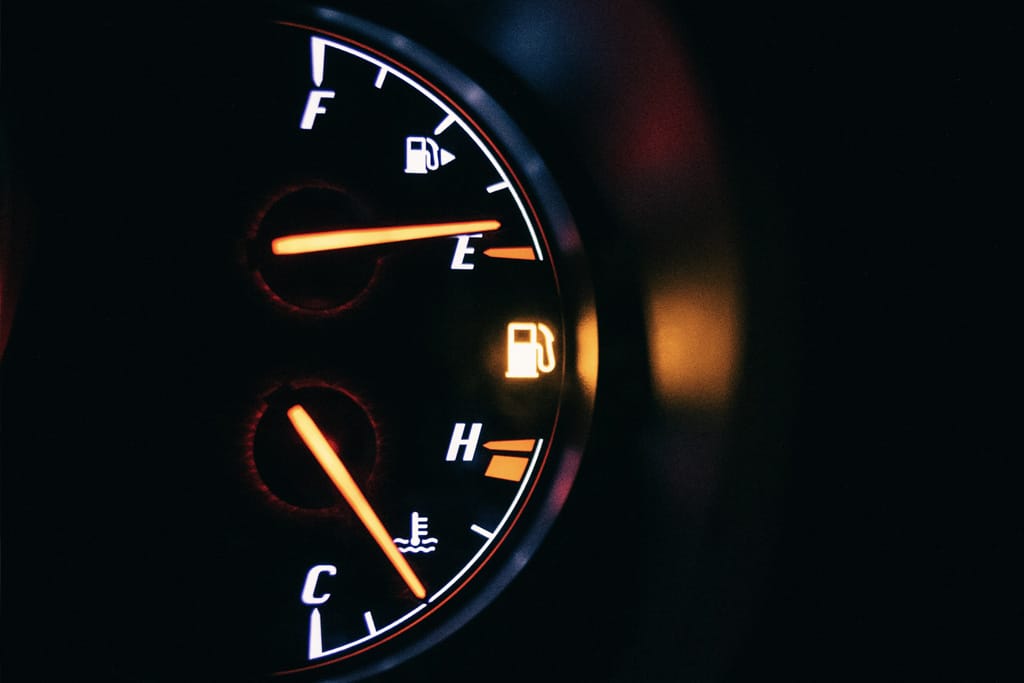One of the most painful expenses is putting fuel in your car. Especially with prices rising almost weekly. Whether you commute to work in your car or only fill up for weekend adventures, you’re more than likely looking for ways to pay less for your fuel and save it as much as possible. The difficulty is, knowing exactly what you can do so your money stays in your pocket, fuel remains in your tank and so ultimately, driving remains affordable.
How do your driving habits affect your fuel levels?
It’s not a surprise that driving faster uses more fuel, 70 mph will use up to 30% more fuel than it would driving at 50 mph. But it’s more than speed. It’s about finding the right biting point that perfects speed and fuel efficiency. This may be obvious, but driving everywhere at 30mph isn’t the best way to save fuel, so don’t think speed is the key.
There are multiple debates about what speed is the most efficient from different car models. However, instead of looking at speed and gear, pay attention to your MPG (miles per gallon). A lot of modern cars will have this information displayed in real-time, showing you the efficiency of your driving. Your car’s MPG number needs to be as high as possible to get the most from your fuel. Check your user’s handbook to discover what your highest mpg number is and then adapt your driving habits to reach it.
It’s important to note that you shouldn’t allow this to become a distraction while driving. Your habits won’t change overnight but slowly and surely you’ll become familiar with what speeds and actions maximise your MPG. We’ll give you a tip – slow acceleration and deceleration, slowing down for corners and sticking to speed limits helps (it allows you to drive efficiently on the roads).
Shopping around for fuel
This certainly won’t be a surprise but the cost of fuel can vary dramatically depending on your location. You might have a favourite fuel station or perhaps one conveniently round the corner from your place of work.
But it’s fair to say prices aren’t regulated nationwide – a quick way to save is by looking around. The pumps at your supermarket tend to offer the best prices, but look for the lowest rates. You’d be surprised sometimes, by driving an extra mile or two, you can save as much as 5p a litre, so it is well worth the few minutes drive.
Why the condition of your car is important
Ultimately the smoother you drive your car the more fuel you save. The same can be said for the smoother your car runs within itself. One of the most important factors in this is your car’s tyre pressure.
Think of it this way, if you have tired legs that have ankle sprains, bruised knees and damaged calves it’s harder to walk a mile. The more damaged your tyres are on the car, the harder it will be to drive which results in higher fuel consumption. So in order to save fuel, check your tyres.
In your user manual, you’ll find all the information you need for what pressure each tyre needs to be at. Check regularly that they are correct, monthly should suffice, but you may need to more often depending on how many miles you cover in a week.
How turning off your engine can help
We know what you’re thinking. Nobody is sitting around with their engine on for no reason. But you’d be surprised. Sitting in traffic, waiting for a friend to come out and get in the car, listening to that final song in your driveway before going inside.
When it’s freezing outside, it goes without saying do not run the engine to heat your car before leaving your home. These are all big ways to waste fuel so try to avoid them. Some cars have a ‘city mode’ on them that will automatically switch the engine off when you’re at a standstill. If your car doesn’t remember to switch your engine off in these moments when you’re due an upgrade make it a must-have feature.
Remove roof boxes and bike racks
The same way damaged legs are harder to walk on, the heavier the load the harder it will be to carry. If you’re well known for using your car as the spare room dumping ground, this one will be your quickest, easiest and most efficient way to save fuel.
Bike racks and roof boxes are two of the heaviest items on your car that you can easily remove. They’re not used on every journey so make sure you don’t carry them unnecessarily. Here are a few other popular items lurking in peoples cars:
-
- Shoes and jackets
- Books
- Rubbish
Believe it or not, all those old lunch boxes add up. Clear out your car this weekend with this one phrase in mind “do I need it to be in my car right now”. If the answer is no, find a new home for it and save yourself some fuel..
Use less air conditioning
This one may come as a surprise, but your air conditioning uses fuel. The compressor that provides your lush cool air is designed to run off your fuel. In some cases, excessive air conditioning can increase your fuel consumption by 10% – you do the math! Per £60 tank, it would be costing you £6 to have cold air instead of simply opening the window or removing your coat. Obviously, at this time of year in the UK, it is less of a problem.
Commenting Nick Zapolski, founder of ChooseMyCar.com “ The price of fuel is getting scary! Our research report showed 69 per cent of UK drivers believe the Government should be dropping VAT rates to stabilise recent price hikes. During these times you can make your tank go a little further with some of these fuel-saving tips.
The biggest tip is to shop around and plan your journey as you can easily save 5p a litre by avoiding costly motorway service stations. Also, avoid accelerating like you’re Lewis Hamilton and stick to the speed limit on faster roads.“
There are so many ways to save fuel when driving, all you need to do is find one that suits you and saves you the most.






